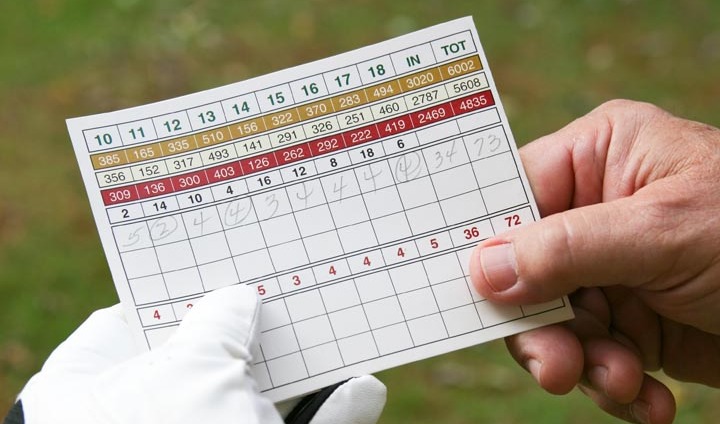Practice With Purpose
Posted on 30th August 2019 at 12:54
How many mid to high handicap golfers do you see down on the driving range hitting ball after ball, bucket after bucket most days and nights of the week, without real purpose to their practice? As I've said before this makes the golf range owners very happy and rich, but it's not reducing the golfer's handicap! The danger is also that they're grovving bad habits which they then take out onto the golf course. In addition, these golfers get more frustrated with their game and keep going back to the driving range, so building up the anxiety and stress which minimises the chances of putting a free-flowing swing on the ball?
Q. How does a gardener keep his garden free of weeds? Well the answer is "little and often, and with purpose". And that's how any level of golfer needs to practice - LITTLE and OFTEN and with PURPOSE!
By pupose I mean to practice specific skills with different clubs and in different scenarios as you would play in any competition. So, practice every shot as though you were going to win your weekend four-ball, medal or stableford or even your favorite Major i.e. The Masters, USA Open, The Open and the USA PGA. By using this approach, you begin to put yourself under the circumstances and pressures to totally improve your handicap, or change your golfing career and perhaps your life! Importantly it's also building up your two-box (see my first blog and video - https://www.mygolfmind.com) routine by making the best decisions (Strategy Box) and executing (Shot Box) a free-flowing swing on the ball with PURPOSE. Remember to take a deep breath in through the nose as you begin to step over the dividing line between the two boxes and exhale through the mouth as you step into the Shot Box!
If you have lessions with your club's PGA Professional, he/she will give you the practice drills to improve specific areas of your bio-mechanical game. But the big question is what are you doing regularly (remember - how does the gardener keep his garden free of weeds?) between those lessions? Well may I suggest that you consider spending at least one-hour per week to start off if you're a handicap golfer and practice using some of the following tasks; or more if you're a single figure, scratch or PGA Professional. Remember you're not only practicing and improving your bio-mechanical part of the game but honing and strengthening your mental tenacity at the same time! And if you can get a buddy to practice with you then you can set up little competitions between yourselves!
Putting, Chipping and Pitching:
Place five balls at equal distance all around the hole on the practice putting green 3' from the hole. Putt them all in before moving the balls out to 5' and then again to 10'
Place five balls at 4'distance from the hole and putt them all in before moving them to 8' and then to 24'
Place five balls each off the practice putting green at the following distances to one specific hole: on the fringe, 3' off the fringe and then move around the putting green to four other distances. These could be 10', 20' and 30', and five from the bunker and five just over the bunker
Irons and Woods:
Using your full range of irons hit five balls with each club to the distance flags on the driving range and get within 10' with the lower irons and 20' with the mid to long irons. Keep reducing the level of dispersion as you improve
Using your full range of woods and rescue clubs hit five balls with each club to a specific distance within a dispersion of 20 yards, then 15 yards and then 10 yards
Play a series of clubs as you would on any hole at your club i.e. driver, 5 wood and then a wedge on a par 5 hole
Note: you're also practicing your distance , feel and touch as well as accuracy with all these purposeful practice sessions, which again builds up your confidence when you're in the Strategy Box for deciding which specific club and shot you're about to take. Which in turn reduces your anxiety and stress out on the golf course.
And remember the gardener's philosphy - 'little and often and with purpose' - so just go ahead and practice as though you're in your favorite competition - JFDI.
Until next time - keep it on the fairway ...
Hopefully, you're beginning to to find My Golf Mind blog posts of interest and have started getting you thinking and taking action on building the mental side of the golf game? So why not share them with your golfing buddies, okay?
Do give me a call on 07973 614969, leave me a comment or email me at keith@mygolfmind.com if you have any questions or like to challenge anything I've said or written.
Keith Haynes
Northamptonshire's First Master Mind Factor Coach
p.s. I deliver a two-hour 'spring clean your mind; spring clean you golf' seminar for golf clubs and golf societies, so make contact for further details



